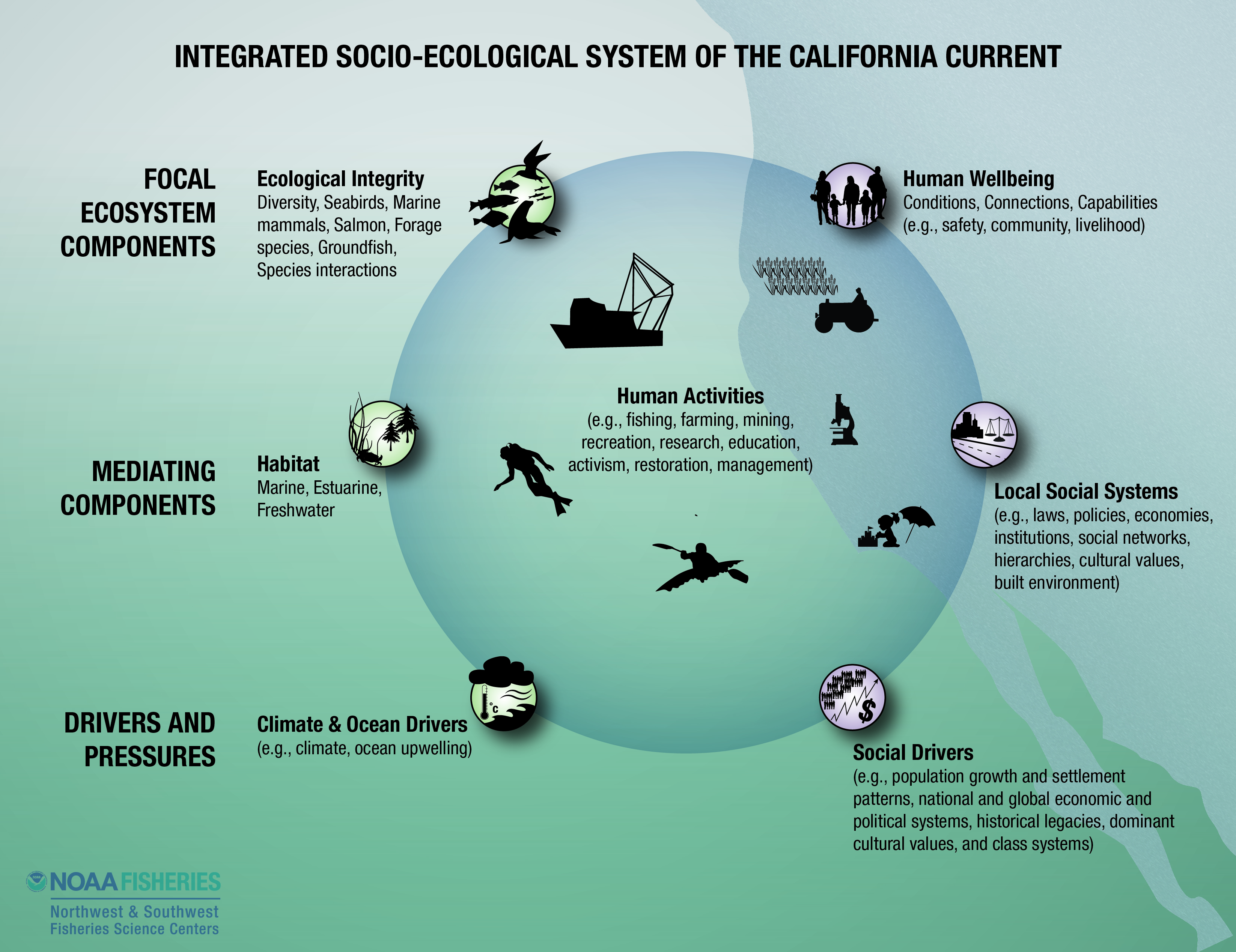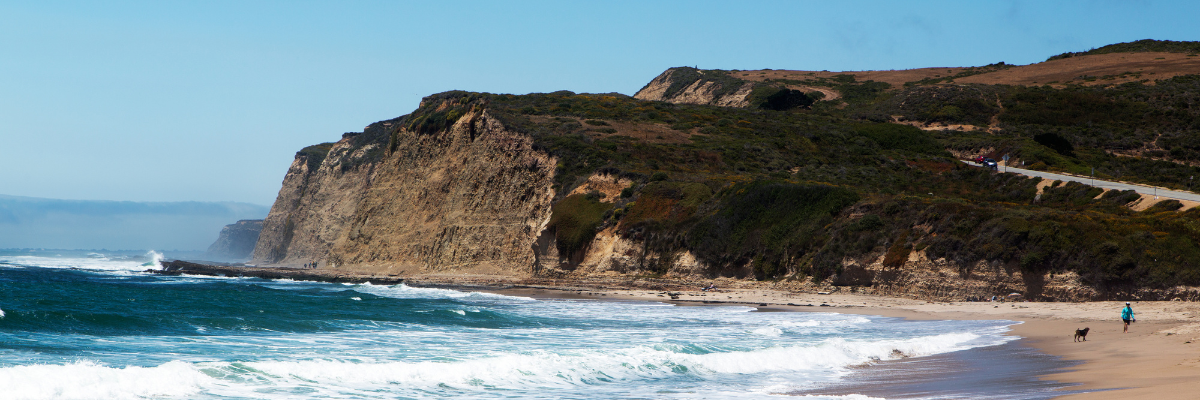To better support the interdisciplinary dialogue necessary for a successful IEA process, we conceptualize the California Current as a social-ecological system which explicitly acknowledges linkages and feedbacks between human and biophysical systems at multiple scales (figure 1; Levin et al. 2016).
The biophysical environment (left half) is organized into three major tiers: climate and ocean drivers, habitat, and focal components of ecosystem integrity. Some of the more important drivers of California Current include large scale atmospheric conditions (e.g., ENSO, PDO) that affect ocean circulation and temperature, and regional drivers such as upwelling strength and timing. In the middle tier, habitat size and condition mediates these drivers and is considered the matrix through which ecosystem interactions occur. At the top are focal components or living resources, such as marine mammals, salmon, and forage species like sardines, which are foundationally important members of the of the California Current ecosystem and which we care about.
The human dimension (right half) of the California Current is similarly organized by tier, and is composed of social drivers, local social systems, and human well-being. At the base of the human system are large-scale social forces, such as global economic systems, population growth and settlement patterns, and dominant cultural values, which constrain or enable local social systems and human activities. Local social systems such as state or local laws, regional economies, and social networks, affect human wellbeing directly or indirectly and moderate how human activities interact with the natural environment. Human well-being can be measured in a number of ways, but essentially represents a state where human needs are met, individuals can enjoy a satisfactory quality of life, and people can act meaningfully to pursue their goals.
Human activities are placed at the center, suggesting they are the most tangible points of connection between the social and ecological systems. In the California Current, ocean-based activities include harvesting or removal of various types of living resources (i.e. fishing), recreational pursuits, transportation of goods and services, as well as the construction and maintenance of associated systems. A range of land-based activities similarly interact with coastal environments, including infrastructure (e.g., dams, ports) or activities which affect the timing and magnitude of freshwater and sediment transport, nutrient or contaminant inputs, farming and aquaculture operations, and public access and tourism.

